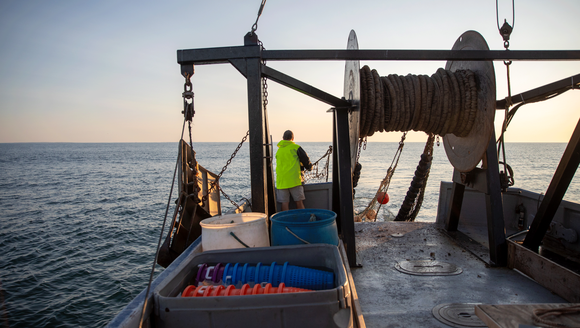Evaluating the Life History and Stock Structure of Yellowfin Tuna (Thunnus albacares) in the Northwest Atlantic Ocean
Learning more about yellowfin tuna
Yellowfin tuna are a large highly migratory species (HMS) found throughout the world's oceans and are the most targeted HMS species along the US East and Gulf coasts. Like many other highly migratory species, yellowfin tuna are managed by Regional Fisheries Management Organizations —international groups responsible for the science and management of theses species in the different ocean basins. Surprisingly, we have little scientific information about yellowfin tuna, which makes developing accurate assessments and management strategies challenging. Our project seeks to improve our knowledge on the biology of yellowfin tuna, especially key inputs like age, stock structure and spawning.
Project Goals:
- Evaluate the age structure of yellowfin tuna encountered by US fisheries in the Northwest Atlantic.
- Determine important reproductive traits of yellowfin tuna in the northwest Atlantic.
- Evaluate migratory patterns of yellowfin tuna in the northwest Atlantic including horizontal distribution, vertical profiles, and stock structure.
- Enhance biological collections and archives of yellowfin tuna in the Atlantic.
Like all species when left undisturbed, yellowfin tuna are subject to population status changes through biological and physical changes in the ocean. When you introduce fishing, it adds another mortality source that impacts population status. Commercially and recreationally harvested marine species are assessed at specific intervals through the use of stock assessments, and once a stock status is agreed upon, harvest levels (or quotas) are set.
In fisheries, accurate stock assessments require information about the amount of fish landed in a given time period, the age of the fish, physical attributes, age at reproduction, population boundaries, and more. Unfortunately, and especially for highly migratory species, many stock assessments lack this information resulting in highly uncertain stock assessments and unsustainable management advice. Uncertainty and misguided management leads to overfishing and a host of other issues related to coastal economies, food supply, and more.
Our project seeks to enhance our understanding of yellowfin tuna biological inputs to improve our ability to assess and manage their stock. we are collecting samples from yellowfin tuna with the help of commercial and recreational fishing fleets. We remove sagittal otoliths, which we can analyze age each fish, and use gonads to determine maturity status, potential spawning locations, and provide estimates of reproductive output. We are also using electronic tags to understand migratory movements, habitat utilization, and test current stock structure hypotheses.
Internal Team
-
![]()
Walt Golet
Assistant Professor, UMaine School of Marine Sciences
External Collaborators
-

James Sulikowski, Ph.D.
University of New England
-

Diego Bernal, Ph.D.
University of Massachusetts, Dartmouth
-

Jeff Kneebone, Ph.D.
New England Aquarium
-

Greg Skomal, Ph.D.
Massachusetts Division of Marine Fisheries
-

Craig Brown, Ph.D.
NOAA Southeast Fisheries Science Center
-

Shannon Cass-Calay, Ph.D.
NOAA Southeast Fisheries Science Center
Read Next
-
![Demystifying the Blue Economy]()
Demystifying the Blue Economy
The blue economy is a hot topic these days, but the meaning behind the term isn't always clear. In this blog, we break down what …
Perspectives
-
![Fisheries 101]()
Fisheries 101
Fisheries are the backbone of our state's economy and cultural heritage, but these systems are complex, and managing them even more so. Read on for …
Perspectives
-
![Sea State Recap: Building Climate Ready Communities]()
Sea State Recap: Building Climate Ready Communities
In this installment of the Sea State series at the Gulf of Maine Research Institute (GMRI), we hosted a timely conversation around supporting Maine communities …
Perspectives
-
![While Students Recharge, Educators Level Up: Summer STEM Learning]()
While Students Recharge, Educators Level Up: Summer STEM Learning
Each summer, our education team leads professional development opportunities for teachers, librarians, and community educators across Maine and New England. Read on to hear from …
Perspectives



